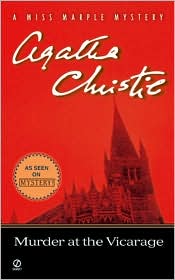
What should you read in public? Must it be chic and discreet?
Absolutely. A trip to the coffeehouse or bistro demands a book as the ultimate accessory, because not only does it define your persona but it also keeps you company while you sip and smoke. You can be as slobby in attire as you want so long as your book looks good -there is no need to dress up in a pink skirt and madras shirt, like the preppy lady on the left with the scone habit, nor to flex tattoos under an REM T-shirt, like the 30ish gentleman in the sunglasses who is texting a novel on his cell phone. You simply sit there with a book and ARE COMPLETE.
So what is the book going to be? The book makes a statement - but the hilarious thing is that nobody knows what that statement is except you. God Is an Englishman? No, it weighs a ton, plus does that say you’d rather be wearing that preppy skirt?
 Nuruddin Farah’s Maps? You really, really want to read this Somalian classic about a boy orphaned in the Civil War between the Somali and Ethiopia, but it is best to savor it in an environment without distractions. (You just found this in your bookcase and it is now No. 1 on the TBR, but not yet ready to go out of the house.)
Nuruddin Farah’s Maps? You really, really want to read this Somalian classic about a boy orphaned in the Civil War between the Somali and Ethiopia, but it is best to savor it in an environment without distractions. (You just found this in your bookcase and it is now No. 1 on the TBR, but not yet ready to go out of the house.) How about an Agatha Christie? Can’t be done. Why? Because your upper-crust in-laws don’t allow you to read mysteries unless they’re in a foreign language.
 (You’re not joking about this. If it’s not on Jane Smiley's or Harold Bloom's canonical lists, these guys are not going to be reading it any time soon.) Christie does say you’re kind of cool, though. It is a universal language.
(You’re not joking about this. If it’s not on Jane Smiley's or Harold Bloom's canonical lists, these guys are not going to be reading it any time soon.) Christie does say you’re kind of cool, though. It is a universal language.In the end, because you are reading three or four books at a time, you bring two - both contemporary novels - both poetic romans a clef you picked up because they complement each other. The first: Branwell by Douglas A. Martin. This very short novel about Branwell Bronte reads like a spare prose poem, recounting the loss of mother and older sister and then progressing to Branwell’s, Charlotte’s, Emily’s, and Anne’s first writing experiences, the invention of complex identities of their toy soldiers, their battles, imaginary countries - recorded in minuscule books which can fit in the soldiers’ hands. Branwell, artistic and dilettantish, is thought to be the hope of the family, but starts drinking at a young age and... there’s tragedy ahead...
And there is tragedy in Susan Sellers’ Vanessa & Virginia, a short novel written from the point of view of Vanessa Bell.
 Fans of Bloomsbury will be fascinated by this poetic account of Vanessa’s painting, her ambivalent relationship with her difficult diva of a younger sister, Virginia Woolf, and her long, somewhat shocking love affair with Duncan Grant, an artist who prefers men and has a series of homosexual affairs. Broken into a series of short, beautifully written sketches, the novel reflects Vanessa's creative work, and her voice is lyrical yet obviously not competing with the brilliant Virginia's.
Fans of Bloomsbury will be fascinated by this poetic account of Vanessa’s painting, her ambivalent relationship with her difficult diva of a younger sister, Virginia Woolf, and her long, somewhat shocking love affair with Duncan Grant, an artist who prefers men and has a series of homosexual affairs. Broken into a series of short, beautifully written sketches, the novel reflects Vanessa's creative work, and her voice is lyrical yet obviously not competing with the brilliant Virginia's.So you have your choice at the coffeehouse.
And afterwards you make a stop at the indie bookstore, where unfortunately you find a few more things you want but decide not to buy the only one that would make sense, Outcaste, or maybe The Untouchables (I've forgotten the title), a Penguin you will doubtless never find again... And then it's out with no bag and yet more publicly displayed books to stuff in your pannier.
2 comments:
Isn't it startling how reading in public can become identity politics?
I'm susceptible to it. I've destroyed covers I can't stand to be associated with a number of times now.
Ellen
I wonder how many people even notice what we're reading. I see more computers and newspapers than books. There's a blog somewhere about what people are reading in Toronto (randomly photographed). I'll see if I can find it.
Post a Comment